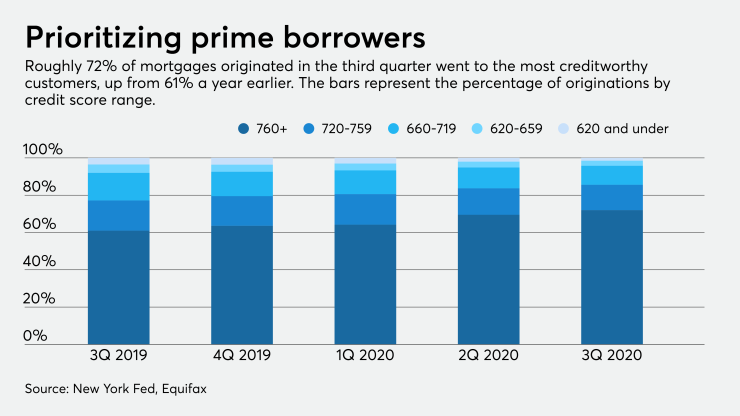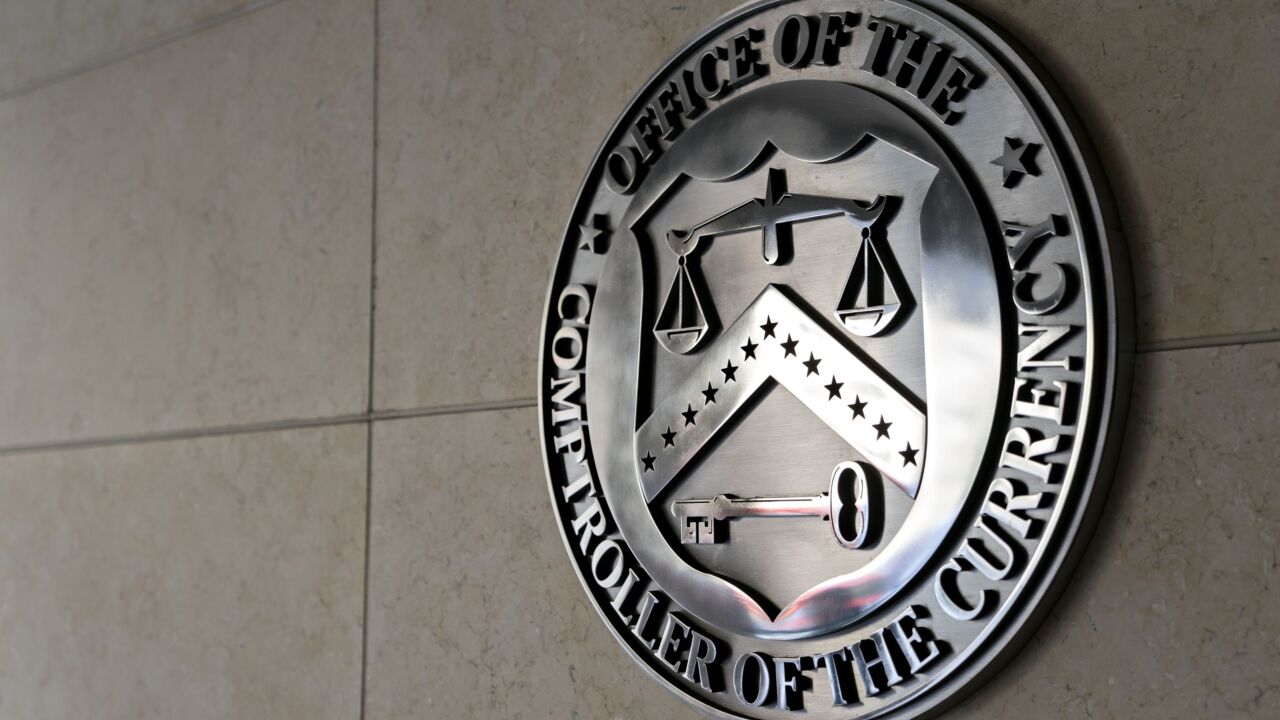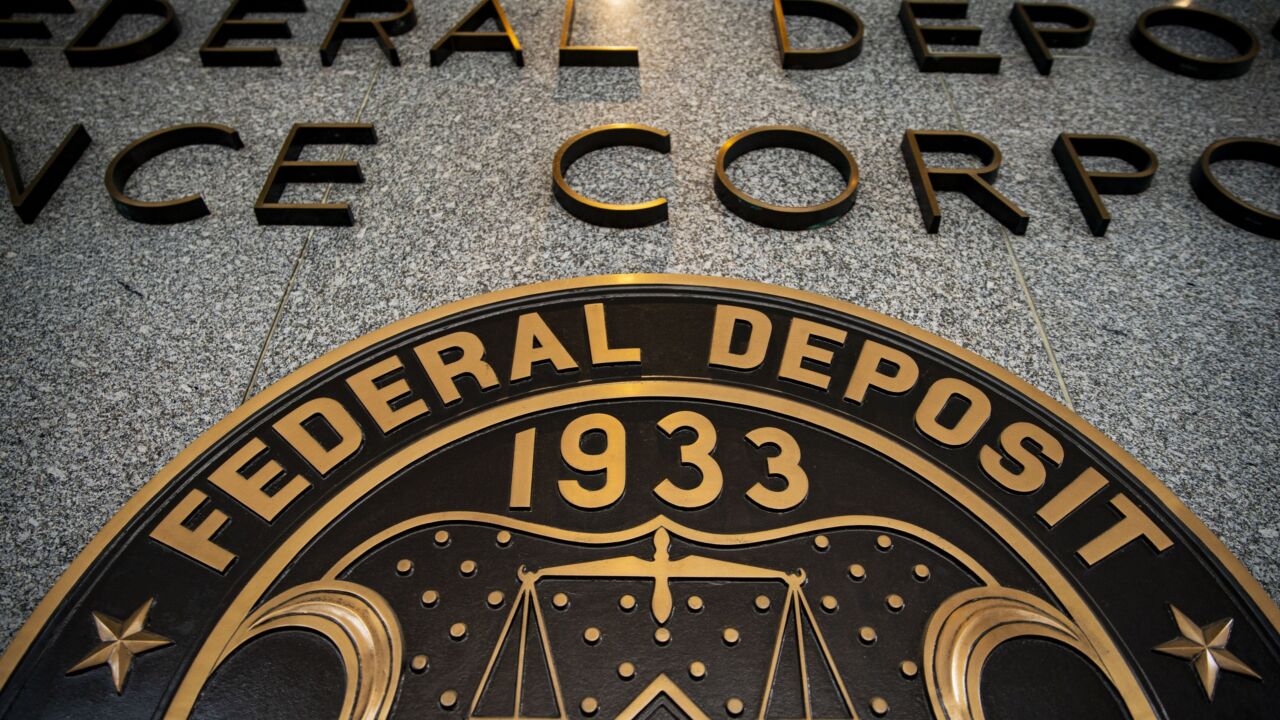Borrowers with excellent credit are benefiting the most from the recent mortgage boom — the latest evidence that the pandemic is exacerbating economic inequality in the United States.
The median credit score for new residential mortgages climbed to 786 during the third quarter, the highest level in more than two decades, according to a report published Tuesday by the Federal Reserve Bank of New York. About 72% of all mortgages originated in the quarter went to borrowers with a credit score of 760 or higher, up from 61% in last year’s third quarter.
Meanwhile, borrowers with credit scores below 683 got just 10% of all the mortgages made during a quarter in which loan volume reached a 17-year high. Mortgage originations totaled $1.05 trillion between July and September, up from $528 billion a year earlier.

The findings suggest that Americans who were already in good shape financially have been the primary winners from low mortgage rates. The average cost of a 30-year fixed-rate mortgage fell below 3% this year for the first time in at least three decades.
Researchers at the New York Fed noted Tuesday that high credit scores for mortgage borrowers reflected an increase in refinancing during the quarter. Existing homeowners tend to have higher scores than first-time buyers.
“Mortgage originations, including refinances, continued on their upward trend as homeowners continue to take advantage of the low interest rate environment,” Donghoon Lee, research officer at the New York Fed, said in a press release.
But even during previous refinancing booms, including those that came after the close of the subprime mortgage era, average credit scores did not climb as high as they did between July and September 2020.
A similar gap between credit haves and have-nots is evident in the auto lending sector, where borrowers with scores below 620 accounted for only 17% of loan originations during the third quarter, the lowest percentage in a decade.
U.S. auto loan originations reached $168 billion during the quarter, their highest level ever. The increase was likely due in part to pent-up customer demand, since many car dealers were closed for much of the spring, as well as a shift in consumer preferences away from public transit during the pandemic.
Roughly half of all new auto loans this year have gone to borrowers with credit scores of 720 or higher, a level unmatched since the aftermath of the Great Recession.
Total outstanding consumer debt, which fell between April and June for the first time in nearly six years, climbed by $87 billion during the third quarter to $14.35 trillion.
For months, economists have been describing the recovery that followed stay-at-home orders in the spring as K-shaped, a reference to the disparate paths traveled by white-collar and blue-collar workers.
“If you’re on the top, you’re going to do very well,” President-elect Joe Biden
The research published Tuesday shows that consumers who received forbearance on their auto loans and mortgages during the pandemic had average credit scores that were about 40 points lower than borrowers who did not get forbearance.
In addition, borrowers who enrolled in forbearance had remaining loan balances that were about 30% higher than those who did not enroll. They were also much more likely to have been delinquent prior to the pandemic.
Many lenders have classified borrowers who were delinquent before entering into a forbearance program as current, since they had no payment due during the deferral period, the New York Fed researchers noted
The findings suggest that delinquent borrowers who entered into forbearance programs have gotten a sizable boost to their credit scores as a result of being marked as current.
“On average, delinquent borrowers whose loans were converted to ‘current’ upon entry into forbearance saw an average 48 point increase in their credit scores,” the researchers wrote. “In contrast, the average credit score of borrowers who were current before the forbearance was unchanged.”
The New York Fed’s report is based on data from Equifax, and its findings about the credit scores of borrowers rely on Equifax Risk Score 3.0.





